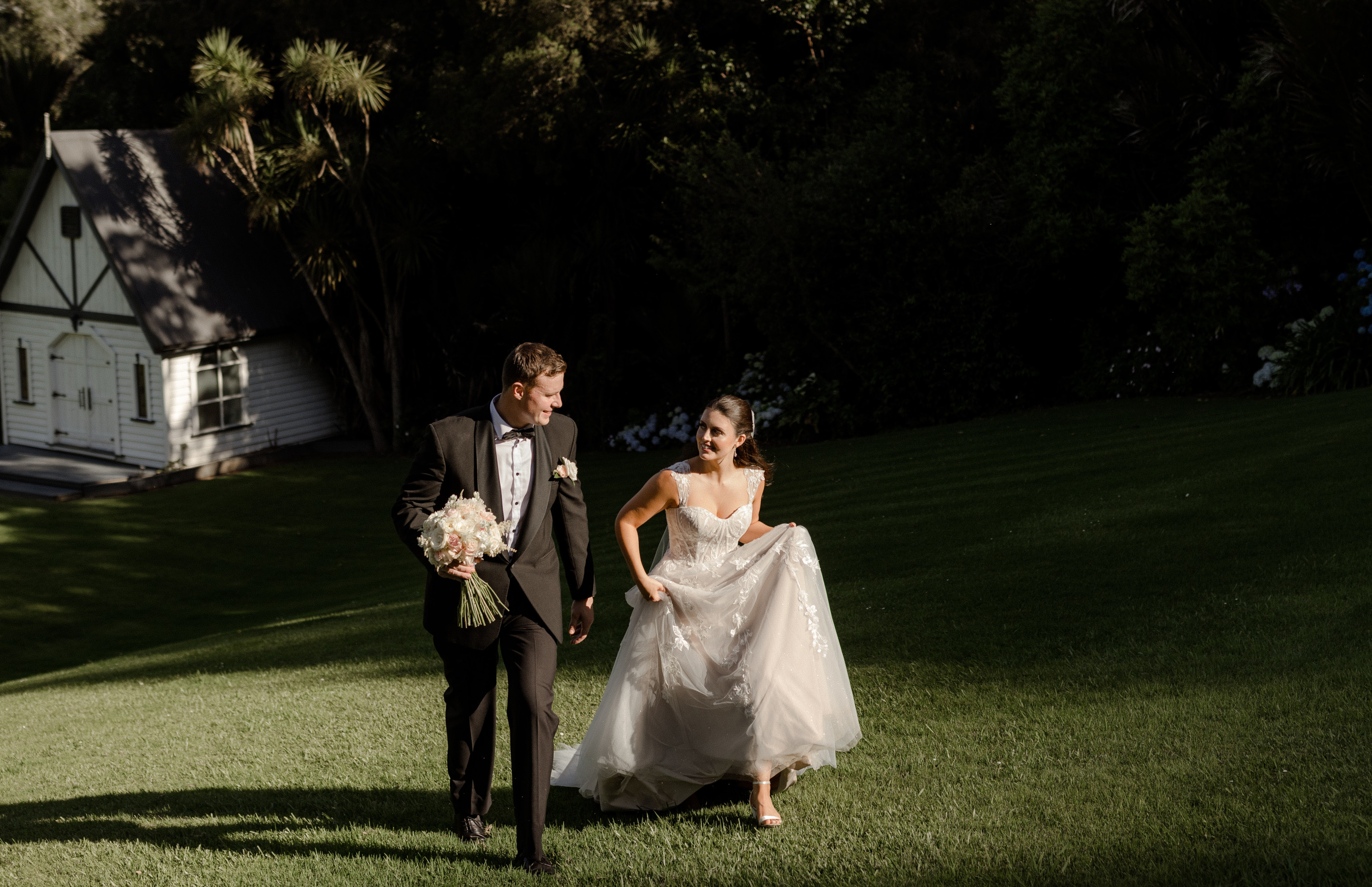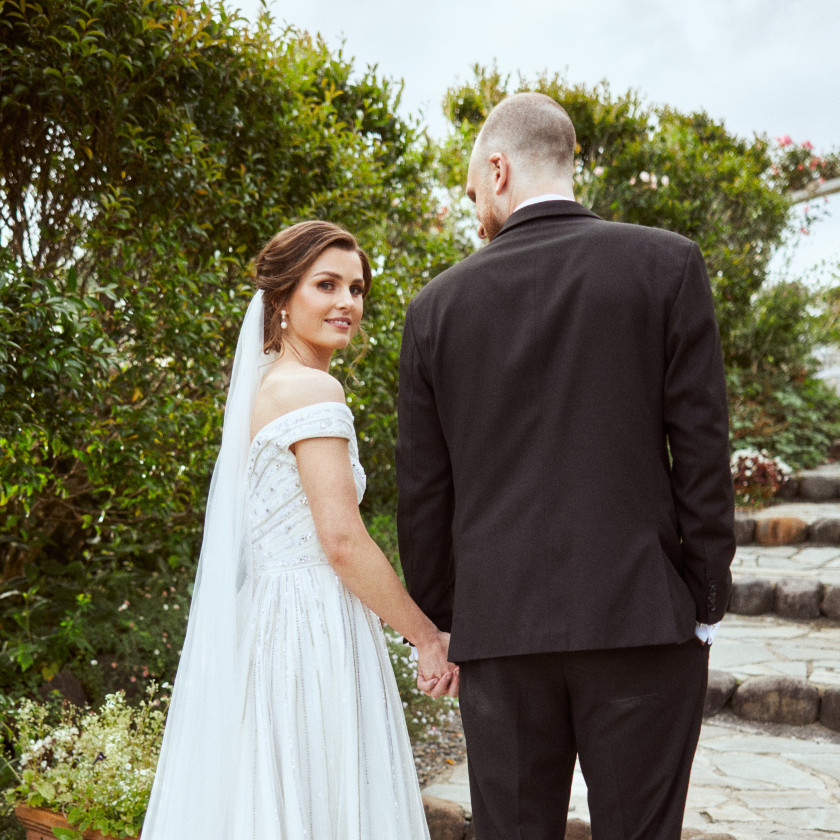The Top 5 Wedding Menu Styles
— By Lydia Martin
15 October 2015
The style of menu you choose for your wedding will have a big effect on the overall feel, impression and cost of the whole day.
This makes it one of the more important decisions you’ll make early on along with choosing a venue. Luckily the modern couple now has more options than ever, which can be both exciting and confusing! To help you understand these options and choose the right style of menu for your wedding, LittleWolf have provided an explanation of the five most common formats:
 1/ Canapé/Fingerfood Menu
1/ Canapé/Fingerfood Menu
For shorter receptions, a limited budget or if food simply isn’t that important to you (and that’s not a criticism, if music is your thing then focus your budget on a band and rock it out, it’s your party!) theres absolutely nothing wrong with offering only canapés. Start with lighter, more elegant pieces and move towards more substantial items later in the reception. But if you’re partying into the evening be sure to provide some sort of supper. Most caterers will be open to you providing the supper yourself, especially if it’s at a private home (possibly even consider asking a family member to arrange this as their gift).
2/ Fork or Bowl Food
Different caterers will call this different things but these are small dishes of food designed to be eaten easily while standing and mingling. These are almost always served with finger foods and two to three dishes per person is the equivalent of a meal. They can be tray served by waitstaff or artfully arranged on ‘stations’ around the room and can suit both a casual and rustic reception or a more formal and elegant one.
The benefits of fork food are that you may need less equipment and service staff as well as tables and chairs, saving on costs, and it’s also a more relaxed way of eating as the food can be served over a period of time rather than in one hit. You can also have a bit of fun designing the stations. Consider making them interactive by having a chef prepare or finish off the dishes and handing them to guests. Or personalise them: remember the hot dogs you had together in New York or the crab cakes he made you when he was trying to impress you with his cooking skills? Base a food station on those memories and make it part of your story.
 3/ Buffets
3/ Buffets
The good old buffet reception has fallen out of fashion in the last few years, but that’s mostly due to unimaginative menus and poor execution, not because there’s anything wrong with the concept. In fact a buffet can strike the perfect balance between a formal seated affair and one where guests can eat at their own pace and also switch seats. Although they can be a little cheaper than plated meals because you’ll need slightly less wait staff, the cost really depends on the final menu you choose, including how many different items you want to offer. Bear in mind that a smaller selection presented beautifully can be more satisfying than a large range presented poorly.
The key to a striking buffet is the styling of the food table, so be sure to ask your caterer how they plan on presenting this. If they don’t seem to have many ideas ask your stylist/event manager to work with them. Whatever you do, just say ‘No’ to big, stainless steel, hotel style chafing dishes!
4/ Table Platters
In the USA they call this ‘family style’. All it means is that each table gets platters placed in the centre for the guests to share and serve themselves to their plates. This is quite a fun way to eat as it provides a compromise between a buffet, keeping the variety of dishes but without having to queue, and a plated meal.
For example, consider antipasto or tapas platters to start, followed by whole sides of smoked salmon and carved roast lamb leg with accompaniments for a main course, finished off with a mix and match selection of desert tarts with sauces and custards in vintage milk bottles.
 5/ The Plated Meal
5/ The Plated Meal
The plated meal is a more formal way of dining. It is the format closest to a restaurant experience and generally the most expensive due to requiring more equipment, waiters and chefs. Only trust experienced caterers with this, as you don’t want issues such as the Bridal table having finished their meal before the last table has been served.
Giving your guests a choice of entree or main will also increase the cost, as the caterer will have to have more portions of each option ready. Tricks to consider include having a shared platter for an entree followed by individually plated mains, or to offer ‘alternate drop service’, where guests don’t get to choose their dish but the two choices get served to alternate guests (e.g. Salmon, Beef, Salmon, Beef). It’s then up to guests to swap with their neighbour if they like.
It’s my experience that a plated dessert isn’t always the best option as by then guests have been sitting in one place for quite some time during speeches and dinner service and welcome the opportunity to stand and mingle. It’s usually enough to have a dessert table of petit fours or other easily eaten sweets, or even a simple dessert buffet which might include the sliced cake.
Final Advice
Whatever format you decide on it’s important to be a responsible and thoughtful host and also that your guests know whether to expect a full meal or to eat beforehand, so be sure to mention it in the invitation. If it isn’t otherwise stated and your reception is over the lunch or dinner period, guests will assume that they are going to be fed and won’t eat beforehand.
Using a good caterer will make this whole process a lot simpler as they will guide you on what is and isn’t practical for you based on your other arrangements, preferences and budget. They should also be able show you photographs and menus of weddings they have catered in the past and even arrange a menu tasting to finalise the details, though most caterers will only do this if you have confirmed you will be using them.
Bear in mind that some venues have exclusive arrangements with one or a small list of preferred caterers, so you may have to decide early on which is more important to you: having that particular venue or being able to choose your caterer. Hotels may also be a little less flexible as they generally have a set list of menus to choose from, but they have benefits such as offering all inclusive packages with no additional staff, equipment and venue hire costs and of course the convenience of accommodation.



